Hormone Replacement Therapy with Pellet Implants

Testosterone Pellets are one of the most effective forms of Testosterone Hormone Replacement Therapy. This form of Hormone Balance Treatment involves surgically inserting tiny cylinders of pure Testosterone just underneath the skin.
In addition to Testosterone Pellets, there are also Estradiol Implants as well. Testosterone Pellets are made up of Bio-Identical Testosterone, and the Estradiol Pellets contain both Bio-Identical Estradiol and Stearic Acid.
The cylinders are created by taking the hormones and other ingredients and either fusing them or applying high levels of pressure to form the hormones into small cylindrical shapes.
The pellets are relatively small. They are smaller than a Tic-Tac breath mint and more prominent than a grain of rice.
The body of clinical evidence suggests that Pellet Implant Hormone Replacement Therapy is the best way to restore hormone levels in the human body. The rate at which testosterone is absorbed into the body is more closely compared to the body's natural release patterns than any other form of Testosterone Hormone Replacement Therapy.
Unlike some other forms of therapy, such as Testosterone Patches, Testosterone Pellets are perfectly designed for Female Testosterone Replacement Therapy. Testosterone Pellets release small and steady levels of Bio-Identical Testosterone which closely mimic the body's own natural patterns. Because of this, Testosterone Pellets restore average hormone balance more effectively than any other method.
How are Testosterone and Estrogen Pellets made?
In America, compounding specialists make most Testosterone and Estrogen Pellets in pharmacies. The Pellets are created in a sterile environment and stored in treated glass vials.
Although most Testosterone Pellets are made in pharmacies, there is also a form of Testosterone Pellet known as Testopel, the only current form of Testosterone Pellet Therapy that the Food and Drug Administration expressly approves. Testopel provides a 75-milligram dose of Testosterone, but compounded Testosterone Pellets can be specially designed for the individual patient.
What Makes Testosterone Pellets Such a Strong Treatment Option for Testosterone Deficiency?
Testosterone Pellets are highly effective because of their ability to deliver a consistent dose of Testosterone Hormone Replacement Therapy for an extended period of time. For women, a single implant provides three to five months of Testosterone. For men, a single pellet provides four to six months of Testosterone.
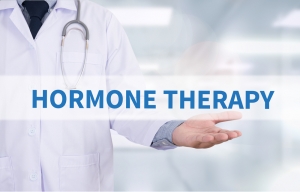
Pellet Implants are a highly desirable form of Testosterone HRT because they effectively bypass the varying and fluctuating Hormone Levels associated with all other forms of Testosterone Replacement Therapy.
Creams apply a hefty dose early in the day that starts to fade later. Testosterone Patches are steadier than Testosterone Creams, but they are still less consistent than Pellets.
Testosterone Injections are the least consistent of all of the above, but they provide a more significant initial boost of Testosterone. For this reason, Testosterone Injections also have a slightly higher risk of side effects than other forms of Testosterone Treatment.
Estrogen Pellets also provide a similar level of consistency concerning hormone balance. Estrogen Implants optimize health and protect against disease by maintaining a healthy ratio of Estrone and Estradiol.
Unlike some other forms of therapy, neither Estrogen Pellets nor Testosterone Pellets increase the chance of experiencing blood blots.
Testosterone Replacement Therapy Menopause Benefits
In clinical studies, Testosterone Pellets are more successful than other forms of Hormone Replacement Therapy for the treatment of hormone imbalance in women. For women undergoing Menopause, Testosterone Replacement Therapy offers the following benefits:
Fosters Healthy Bone Mineral Density
Reduces the Risk of Osteoporosis and Osteopenia
Increases Sex Drive
Increases Sexual Ability
Improves Sleeping Habits
Reduces Occurrence of Hot Flashes
Provides Migraine Relief

Testosterone Pellets have been entirely accepted as a successful treatment to relieve the headaches and migraines sometimes associated with menopause. Regarding sexuality, testosterone is just as crucial for women as it is for men.
Although Estrogen primarily controls the sexual cycles of the human body, Testosterone controls most aspects of sexual performance, desire, and ability.
Testosterone Replacement Therapy improves sexual performance by increasing the sensitivity of the sexual organs and the ability to produce lubrication in preparation for sex.
For women, Testosterone also provides a number of urological benefits. It decreases the intensity of the urge to go and prevents patients from having to go as often. It also alleviates the experience of incontinence.
Testosterone Replacement Therapy Benefits
Testosterone Pellets also offer a number of powerful benefits to both men and women suffering from Testosterone Deficiency:
Improves Energy Levels
Reduces Anxiety
Alleviates Depression
Enhances Overall Sense of Well-Being
Sharpens Memory
Improves Concentration
Increases Muscle Mass
Fosters Healthier Bone Mineral Density
Reduces Body fat
Testosterone is vitally important for the mental and physical health of both sexes, and there is strong evidence that healthy Testosterone Levels have a preventative impact on the risk of experiencing a number of different illnesses, including Parkinson's Disease and Alzheimer's, which appear to have at least some association with Testosterone Deficiency.
Testosterone Implants also have the highest success rate of any form of Testosterone Replacement Therapy. Testosterone Pellets are incredibly convenient, requiring only two to four simple outpatient procedures per year.
Many patients simply aren't committed enough to maintain some other forms of therapy as effectively. With Testosterone Implants, the patient has no responsibility other than making his or her doctor's appointments.
Testosterone Pellets have been used for a long time. They were first used as a medical treatment in the 1930s, using actual testosterone harvested from 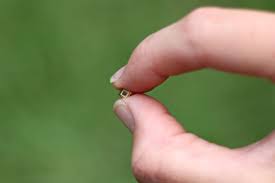 organ donors.
organ donors.
Today, testosterone is formulated using Recombinant-DNA Technology in a laboratory and is completely safe and sterile. Although testosterone Replacement Therapy is made in a lab, it is identical to the testosterone made by the human body, meaning there is no risk of rejection and no adverse consequences of using an unnatural medical treatment.
Because Testosterone has been used for so long, there is an extensive body of evidence regarding its safety and efficacy.
Where and How are Testosterone Pellets Inserted?
Testosterone Pellets are implanted in an outpatient procedure utilizing a local anesthetic. The process is quick, easy, and produces very little pain for the patient, so it's effortless for the patient to handle.
The Testosterone Pellet is commonly surgically inserted underneath the skin into the upper buttocks. The physician will make a small incision, insert the Testosterone Pellet, and then use medical tape to close the wound for quick and natural healing.
When choosing Testosterone Pellets, it is crucial to find a highly experienced medical professional with a history of performing the treatment to perform the treatment effectively and provide the optimum appropriate dose.
What are the Side-Effects of Testosterone Implantation
As with any other form of Testosterone Hormone Replacement, there is always at least some risk of experiencing side effects. These are some side effects that you may experience directly as a result of Testosterone Implantation Surgery:
Minor Bruising
Minor Bleeding
Infection
Skin Discoloration
Extrusion of the Testosterone Pellet
Discoloration and minor bruising are relatively common side effects, but the other side effects are infrequent. In some cases, Testosterone Replacement Therapy may lead to a minor increase in hair in some female patients.
Testosterone can also lead to elevated Red Blood Cell counts in some patients. This is because Testosterone plays a role in bone marrow function, which increases the production of the cells. One of the most common symptoms of Testosterone Deficiency is anemia, which leads directly to feelings of fatigue and exhaustion related to Low-T.
Testosterone Hormone Replacement Therapy may, in some cases, increase Red Blood Cell counts to above average. If Hematocrit and Hemoblogin 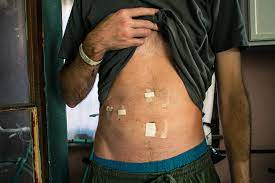 levels elevate, they can be treated simply by giving a routine blood donation.
levels elevate, they can be treated simply by giving a routine blood donation.
To limit the risk of experiencing side effects, avoiding vigorous activity following Surgical Testosterone Implantation is essential. Women should wait about 48 hours before engaging in this activity. Men should wait for between five and seven days.
Performing vigorous activity before the wound has had time to heal is the primary cause of Testosterone Pellet Extrusion, which means that the pellet has worked out of the skin. Under certain circumstances, the patient may be prescribed antibiotics to prevent infection. This is most common when the patient has recently undergone a joint replacement or is diabetic.
Even under these circumstances, antibiotics might not be needed because the procedure is completely sterile and only causes minor bleeding at most.
Why Don't I Hear about Testosterone Implants as Much as Other Forms of Testosterone Therapy?
You may find it strange that Testosterone Pellets aren't as widely discussed as other therapy forms. This is because Testosterone Pellets are not a patented product and are not heavily marketed.
The only patented form of Testosterone Implant is Testopel, and most Testosterone Implants are simply made inside a pharmacy. In Australia and Europe, Testosterone Pellets are much more commonly prescribed, and more pharmaceutical manufacturers make the pellets. For this reason, most of the new scientific data regarding Testosterone Pellets comes from Australia and Europe.
Do Men Need Testosterone Replacement Therapy?
As men age, they start to experience a medical condition that shares many similarities with Menopause, known as Andropause. The human body starts to slowly produce less and less Testosterone, which can eventually lead to severe hormone deficiency.
Men generally produce substantial levels of Testosterone throughout late adolescence and early adulthood, and Testosterone Levels start to drop when men enter their early thirties.
Despite this decline, most men maintain categorically normal Testosterone Levels until sometime between their mid-forties and mid-fifties. Some men even maintain healthy Testosterone Production into their seventies and eighties! Testosterone Deficiency is a natural and significant medical condition that many men experience in America.
Recognizing the signs of Testosterone Deficiency is incredibly important because men can start to experience a significant decline in their quality of life even in their thirties due to Testosterone Deficiency. Some of the most common symptoms of Testosterone Deficiency that male patients experience in their early thirties are:
Depression
Fatigue
Lack of Libido
Sexual Dysfunction
Loss of Bone Mineral Density
Weight Gain
Cognitive Decline
Trouble Sleeping
At the first signs of deficiency, a man should get his Testosterone Levels evaluated. Beginning around the age of fifty, it is highly beneficial for men to have their hormone levels tested even if they are not experiencing significant signs of hormone imbalance, simply to give them a more accurate knowledge of their current hormone state and what they can do to maintain their health.
Estrogen Pellets and Breast Cancer Risk
Compared to other forms of Estrogen Hormone Replacement Therapy, Bio-Identical Estrogen and Testosterone Pellets contribute less to breast cancer 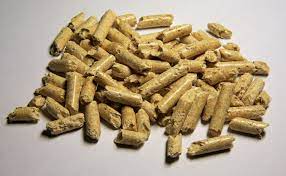 risk than other forms of therapy. Regarding Estrogen Replacement Therapy, other forms of the hormone, such as Oral Estrogen, are not nearly as effective at maintaining an optimal ratio of estrogen and its various metabolites, which increases breast cancer risk.
risk than other forms of therapy. Regarding Estrogen Replacement Therapy, other forms of the hormone, such as Oral Estrogen, are not nearly as effective at maintaining an optimal ratio of estrogen and its various metabolites, which increases breast cancer risk.
Since Estrogen Pellets closely mimic the body's natural processes, the evidence shows that Bio-Identical Estrogen may have protective effects on breast health.
Testosterone Pellets and Breast Cancer Risk
Testosterone Implantation has also been shown to affect the breasts' health positively.
Healthy Testosterone Levels slow down the proliferation of breast cells and can reduce the risk of breast cancer directly as a result. Clinical evidence shows that Testosterone Hormone Replacement Therapy can regulate Estrogen Levels and provide further protection to the health of the breasts.
The body converts other forms of treatment, such as oral methyl-Testosterone, into a synthetic form of estrogen, which can increase breast proliferation, increasing the risk of breast cancer.
Testosterone Pellets have been used in the past as a treatment for patients suffering from advanced breast cancer. In recent years specifically, Androgens like Testosterone have been clinically shown to increase the effectiveness of the breast cancer treatment Tamoxifen.
Why are Recombinant Bio-Identical Hormones Safer than other Synthetic Forms of Therapy?
Bio-Identical Hormones and Synthetic Hormones have their place in treatment, but for standard Hormone Replacement Therapy Treatment, Bio-Identical Estrogen is generally superior to other forms of Estrogen Therapy. Recombinant Progesterone, for example, does not lead to an increased breast cancer risk like other synthetic Progestin medications. In addition to this, Vaginal Progesterone does not cancel out the heart benefits of Estrogen Replacement Therapy like Synthetic Progestins.
Estriol is a form of Estrogen Replacement Therapy commonly used in Europe but has never been submitted to the Food and Drug Administration for approval in America.
This form of Bio-Identical Estrogen does not bind as powerfully to Estrogen Receptors as other synthetic forms of Estrogen, and it does not hurt breast tissue proliferation. There are a number of studies that show that the vaginal application of Bio-Identical Estriol does not raise breast cancer risk.
There is actually evidence that patients that survive breast cancer and take Estriol as a preventative measure have a lower risk of experiencing breast cancer recurrence and a lower mortality risk.
Hormone Balance is one of the most important keys to a healthy body, and hormone restoration has been shown to have numerous restorative benefits, whether in the form of Testosterone Hormone Replacement Therapy, Estrogen Hormone Replacement Therapy, or Human Growth Hormone Replacement Therapy.
Patients suffering from significant hormone deficiency are at substantially increased risk of experiencing a number of health disorders and conditions.
Can Estrogen and Testosterone Pellets Counteract Hair Loss and Thinning Associated with Aging in Women?
In women, hormone deficiency is one of the most common reasons for hair loss. Testosterone and Estradiol Implants can help women grow healthier and thicker hair. It can even encourage hair growth in areas where hair has fallen out due to hormone deficiency in many cases.
When does the patient start to feel improvement after Pellet Implantation?
Some psychological changes may occur in the first day or two after implantation. Many patients don't experience any significant changes for as long as fourteen days. Most patients experience at least some benefit after around a week of treatment. Physiological changes will start to take place relatively quickly, but changes in body composition may take a few months.
Although Hormone Replacement Therapy can induce positive changes even without any lifestyle changes, to receive the optimal benefits of treatment, it is necessary to make proactive changes in your life to foster a healthier body.
This means you should engage in a healthy exercise routine, start a healthy and responsible diet, and manage your stress. Stress significantly impacts human health and is the most potent environmental pressure that contributes to hormone imbalance.
How Long do Testosterone and Estrogen Pellets Remain Active?
Testosterone and Estrogen Pellets slowly break down over time, releasing Bio-Identical Testosterone at a slow and steady rate until the entire pellet has dissolved. The Pellets are made entirely of dissolvable products, so the pellet will disappear completely by the time a new treatment is required.
Hormone Replacement Therapy Pellets last for an extensive period of time, much longer than any other form of treatment. Testosterone Patches and Gels must be applied daily. Testosterone Injections are much more flexible, but at best, you will require a Bio-Identical Testosterone Injection once every two weeks.
On the other hand, testosterone and Estrogen Pellets remain active for months. For women, a single Estrogen or Testosterone Pellet will remain active between three and five months. For Men, the Testosterone Pellet will remain active for four to six months.
How is Hormone Balance Assessed before and during Therapy?
Before treatment begins, you will provide your prescribing physician with a blood sample. This blood sample will be evaluated in a number of different ways, providing the physician with a vivid outlook of your current health and hormone status. In women, the most important tests will reveal underlying levels of Free Testosterone, Total Testosterone, Estradiol, and Follicle-Stimulating Hormone.
In many cases, Thyroid Hormone Levels will also be evaluated. In male patients, complete blood count, liver profile, Free and Total Testosterone Levels,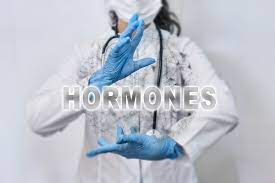 and Prostate Specific Antigen Levels will need to be tested. The PSA Test is essential because it screens for prostate cancer.
and Prostate Specific Antigen Levels will need to be tested. The PSA Test is essential because it screens for prostate cancer.
With Hormone Replacement Therapy Pellets, hormone levels are generally tested at some point just before the new HRT Pellets are to be implanted so that the physician can evaluate the success of therapy and take steps to streamline treatment and ensure its continuing success.
The first year is the most important; after the first year, it may not be necessary to evaluate hormone balance quite as frequently.
Ensuring a Safe and Successful Recovery from Testosterone Pellet Implantation
If you are a woman, avoid any strenuous activity for two days. If you are a man, avoid such activity for seven days.
Wait a full day before you take a shower.
If recommended, take two antibiotic pills.
After implantation, ice the area for one to two hours to prevent swelling.
Leave the incision dressed in dry gauze for two full days. After two days, leave the area open.
Keep the tape applied over the incision until the edges begin to curl. If it does not loosen on its own, take it off in five to seven days.
Don't worry if you experience light redness around the incision. This is a common side effect.
You may experience light physiological discomfort in the three days after the surgery. This is common.
Infection is an infrequent side effect. If swelling and redness grow after two days, you may be experiencing a slight skin infection.
You can use a heating pad twice daily for ten to fifteen minutes to alleviate discomfort. A warm cloth is also acceptable.
If you experience an infection, you must get a prescription for an antibiotic such as Keflex.
You can get an alternate antibiotic treatment if you are allergic to Keflex or Penicillin.
- Research Hgh For Patients Over 60 [Last Updated On: September 2nd, 2023] [Originally Added On: September 30th, 2020]
- Natural Hormone Replacement Abc News 13 [Last Updated On: July 6th, 2023] [Originally Added On: October 2nd, 2020]
- My Own Experience With Human Growth Hormone Case Study [Last Updated On: March 3rd, 2024] [Originally Added On: October 3rd, 2020]
- Ipamorelin Alternative To Hgh Injection Therapy [Last Updated On: March 2nd, 2024] [Originally Added On: October 4th, 2020]
- Human Growth Hormone Therapy For Adult Hgh Deficiency Do The Benefits Stack Up [Last Updated On: March 1st, 2024] [Originally Added On: October 5th, 2020]
- Human Growth Hormone Rehabilitation Benefits [Last Updated On: August 24th, 2023] [Originally Added On: October 6th, 2020]
- HRT [Last Updated On: August 5th, 2024] [Originally Added On: October 7th, 2020]
- Omnitrope Bio-identical HGH Injections [Last Updated On: February 29th, 2024] [Originally Added On: October 9th, 2020]
- Imported Human Growth Hormone Is Illegal In The United States [Last Updated On: February 28th, 2024] [Originally Added On: October 10th, 2020]
- Igf-1 Stimulates The Growth Of Motor Neurons In The Brain [Last Updated On: August 24th, 2023] [Originally Added On: October 11th, 2020]
- Estrogen Hormone Replacement Therapy May Diminish Alzheimers Disease Risk [Last Updated On: February 27th, 2024] [Originally Added On: October 12th, 2020]
- The Potential Benefits Of Estrogen On Alzheimer's Risk [Last Updated On: February 26th, 2024] [Originally Added On: October 13th, 2020]
- Dr. Hotze Talks About A Natural Solution For Depression. [Last Updated On: September 17th, 2023] [Originally Added On: October 14th, 2020]
- Anastrozole Research Study [Last Updated On: February 24th, 2024] [Originally Added On: October 15th, 2020]
- Symptoms Of Hormonal Imbalance In Women: What To Look For [Last Updated On: June 13th, 2024] [Originally Added On: May 12th, 2021]
- Beware of Fake Hormone Booster Pills – Sign Up for the Real Deal [Last Updated On: May 29th, 2024] [Originally Added On: December 21st, 2022]
- Chronic Fatigue versus Hormone Deficiency: How Can Patients and Doctors Tell the Difference? [Last Updated On: July 10th, 2024] [Originally Added On: January 18th, 2023]
Word Count: 2919







